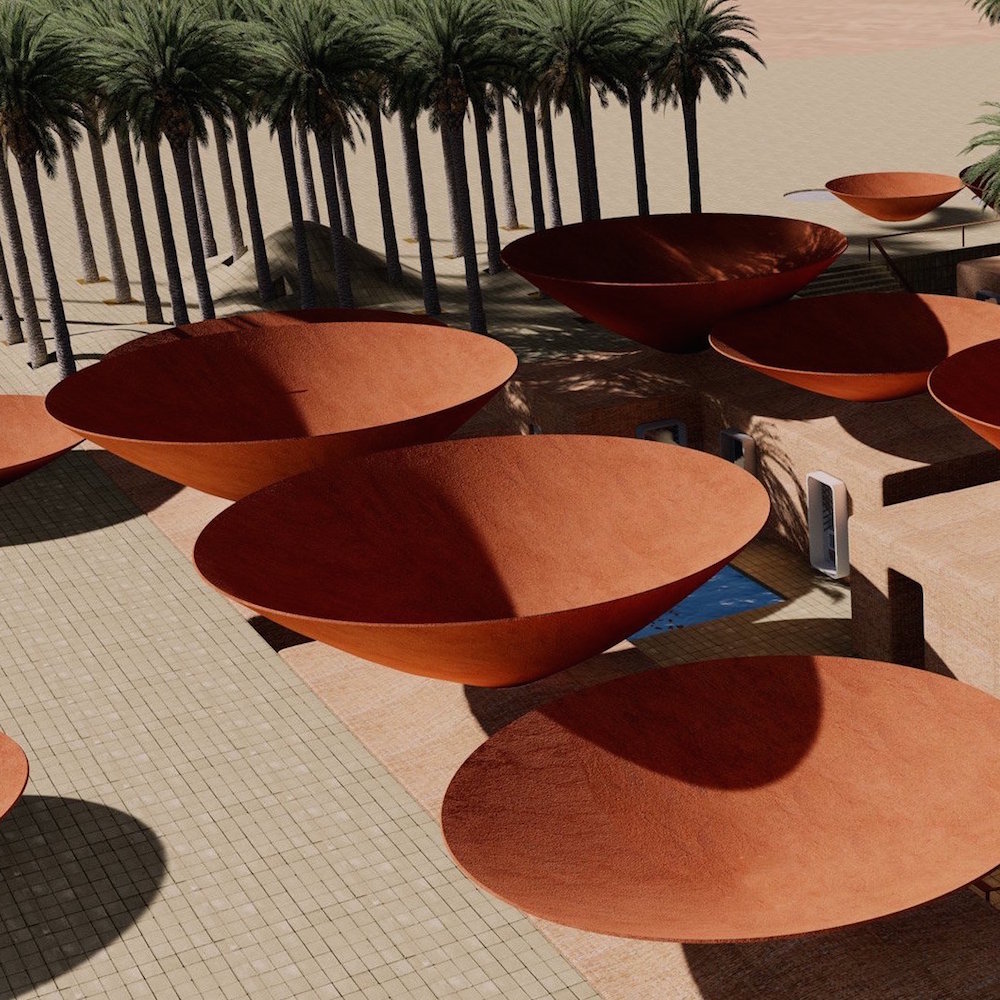TEHRAN, Iran — This bit of news out of Iran is a sign of the times in two different ways. The first is of Iran’s booming architecture practices, the second is a little more troubling.
BMDesign recently released concept work for a school building that uses massive concave dishes to catch and collect rainwater. It occurred to me as I was reviewing these drawings that much of the Iranian architecture we feature on Cfile comes from a sense of practicality; architects there use design to answer needs unique to their communities. For example, Iran is currently seeing migration into their cities. People have to live within new space constraints, which butts up against cultural privacy norms. The solution? Brick screens that give people privacy while also cutting back on space.
That sense of elegant practicality is present as BMD answers a more pressing need: water scarcity. They told Dezeen that more than 85 percent of the country is within an arid, semi-arid or hyper-arid climate. That hyper-arid zone gets bigger every year:
“Unfortunately, every year, this zone expands. Big lakes like Lake Urmia have shrunk to a fraction of their size, gradually disappearing,” they added.
“The consequences include thousands of farmers losing their jobs and [pushing] the city itself to the brink of rationing drinking water. We may not be very far from witnessing a big displacement of people.”
As regions like Iran inch closer and closer to becoming Arrakis from the Dune novels (and, damn, a functioning stillsuit would be a goldmine for anyone who could engineer one), water protection becomes more of an issue. Architecture that could collect this precious resource would resolve a pressing quality of life concern. Who honestly wants to hitch their survival to rationed drinking water? They add that the project would include date trees which would contribute shade and (shudder) food in times of emergency.
The temptation with such a project is to give into fear, which would be a easy response to the questions the design is trying to answer, but probably wouldn’t result in the most aesthetically-pleasing building. BMDesign apparently ignored that impulse because their array of terracotta-inspired dishes are very satisfying to look at.
Bill Rodgers is the Managing Editor of cfile.daily.
Do you love or loathe this use of contemporary brick architecture? Let us know in the comments.









Beautiful images. As a pictorial exercise, great. As a practical solution, not so good. If the drain point blocked, several hundred tonnes of container and water sitting as a point load centre span of the building? Some engineering there! I’d much prefer fabric “sails” to provide shade, catch and direct rainwater to the, I assume, under/on ground cistern. The flexibility of sails leaves one wide open to artistic expression in a practical solution.